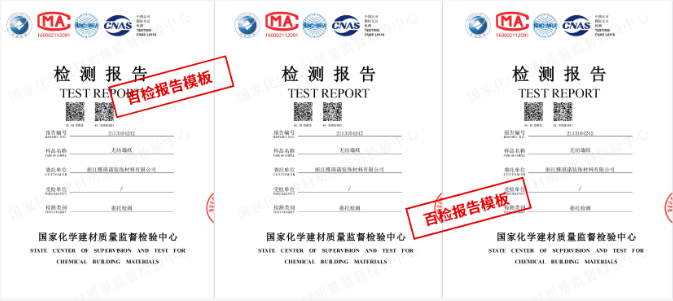
本文主要列举了关于1GHz至40GHz无线通信设备的相关检测项目,检测项目仅供参考,如果您想针对自己的样品让我们推荐检测项目,可以咨询我们。
1. Frequency Range Testing: This test is conducted to verify that the wireless communication device operates within the specified frequency range of 1GHz to 40GHz.
2. Emission Testing: Emission testing is performed to analyze the electromagnetic radiation levels emitted by the wireless communication device across the specified frequency range.
3. Sensitivity Testing: Sensitivity testing is conducted to measure the device's ability to receive and detect signals within the 1GHz to 40GHz frequency range.
4. Transmission Power Testing: This test evaluates the power output of the device when transmitting signals across the 1GHz to 40GHz frequency range.
5. Interference Testing: Interference testing assesses the device's susceptibility to and generation of interference within the specified frequency range.
6. Modulation Testing: Modulation testing is performed to ensure that the wireless communication device modulates signals accurately within the frequency range of 1GHz to 40GHz.
7. Frequency Stability Testing: This test evaluates the stability of the device's frequency output within the 1GHz to 40GHz range under various operating conditions.
8. Harmonic Testing: Harmonic testing assesses the presence of harmonics generated by the device in the 1GHz to 40GHz frequency band.
9. Spurious Emission Testing: Spurious emission testing is conducted to identify and measure unintended emissions outside the main signal band within the 1GHz to 40GHz range.
10. Receiver Blocking Testing: This test assesses the device's susceptibility to receiver blocking when operating in the 1GHz to 40GHz frequency range.
11. Frequency Modulation Accuracy Testing: This test evaluates the accuracy of frequency modulation applied by the device within the 1GHz to 40GHz range.
12. Voltage Standing Wave Ratio (VSWR) Testing: VSWR testing is performed to assess the efficiency of the device's antenna system across the 1GHz to 40GHz frequency range.
13. Antenna Gain Testing: Antenna gain testing measures the effectiveness of the device's antenna in transmitting and receiving signals within the 1GHz to 40GHz range.
14. Occupied Bandwidth Testing: Occupied bandwidth testing determines the bandwidth occupied by the device's signal within the 1GHz to 40GHz frequency range.
15. Adjacent Channel Power Ratio (ACPR) Testing: ACPR testing assesses the device's ability to maintain signal integrity in the presence of adjacent channels within the 1GHz to 40GHz range.
16. Duty Cycle Testing: Duty cycle testing measures the ratio of active transmission time to total transmission time within the 1GHz to 40GHz frequency range.
17. Spectrum Mask Testing: Spectrum mask testing evaluates whether the device's signal conforms to the specified spectral mask requirements across the 1GHz to 40GHz range.
18. Pulse Rise/Fall Time Testing: Pulse rise/fall time testing assesses the speed at which the device's signal transitions between high and low states within the 1GHz to 40GHz frequency range.
19. Bit Error Rate (BER) Testing: BER testing measures the rate of errors in the data transmitted by the device within the 1GHz to 40GHz frequency range.
20. Carrier-to-Noise Ratio (CNR) Testing: CNR testing evaluates the ratio of the signal carrier power to the noise power present in the device's transmission within the 1GHz to 40GHz range.
21. Modulation Error Ratio (MER) Testing: MER testing assesses the quality of modulation applied by the device within the 1GHz to 40GHz frequency range.
22. Demodulation Testing: Demodulation testing verifies the device's ability to correctly extract information from modulated signals within the 1GHz to 40GHz range.
23. Automatic Gain Control (AGC) Testing: AGC testing evaluates the device's ability to adjust signal amplification levels automatically within the 1GHz to 40GHz frequency range.
24. Data Throughput Testing: Data throughput testing measures the rate at which the device can transmit and receive data within the 1GHz to 40GHz frequency range.
25. Error Vector Magnitude (EVM) Testing: EVM testing assesses the magnitude of error in the device's modulated signal compared to the ideal signal within the 1GHz to 40GHz range.
26. Link Margin Testing: Link margin testing determines the margin of signal strength in the device's communication link within the 1GHz to 40GHz frequency range.
27. Jitter Testing: Jitter testing measures the variation in signal pulse timing within the device's operation in the 1GHz to 40GHz frequency range.
28. Phase Noise Testing: Phase noise testing assesses the phase fluctuations present in the device's signal across the 1GHz to 40GHz frequency range.
29. Channel Capacity Testing: Channel capacity testing evaluates the maximum data rate that can be supported by the device within the 1GHz to 40GHz frequency range.
30. Duplexing Mode Testing: Duplexing mode testing assesses the device's ability to support duplex communication (e.g., half-duplex or full-duplex) within the 1GHz to 40GHz range.
31. Spacing Testing: Spacing testing evaluates the frequency spacing requirements for multiple channels within the device's operation in the 1GHz to 40GHz range.
32. Transient Response Testing: Transient response testing assesses the device's ability to quickly and accurately respond to changes in input signals within the 1GHz to 40GHz frequency range.
33. Co-existence Testing: Co-existence testing evaluates the device's ability to operate effectively in the presence of other wireless systems within the 1GHz to 40GHz frequency range.
34. Antenna Diversity Testing: Antenna diversity testing assesses the effectiveness of using multiple antennas to improve signal reception and transmission within the 1GHz to 40GHz range.
35. Out-of-Band Emission Testing: Out-of-band emission testing measures the level of unwanted emissions outside the specified signal band of the device within the 1GHz to 40GHz frequency range.
36. Bit Rate Testing: Bit rate testing measures the rate at which bits are transmitted by the device within the 1GHz to 40GHz frequency range.
37. Beamforming Testing: Beamforming testing evaluates the device's capability to focus signal transmission/reception in specific directions within the 1GHz to 40GHz range.
38. Signal-to-Noise Ratio (SNR) Testing: SNR testing measures the ratio of the signal power to the noise power present in the device's transmission within the 1GHz to 40GHz frequency range.
39. Transmitter Output Power Stability Testing: This test evaluates the stability of the device's transmitter output power within the 1GHz to 40GHz range under varying conditions.
40. Linearity Testing: Linearity testing assesses the device's ability to maintain signal linearity in response to varying input levels within the 1GHz to 40GHz frequency range.
41. RFID Tag Testing: RFID tag testing assesses the performance of RFID tags within the 1GHz to 40GHz frequency range in terms of readability and data accuracy.
42. Spread Spectrum Testing: Spread spectrum testing evaluates the device's use of spread spectrum techniques to enhance signal security and reduce interference in the 1GHz to 40GHz range.
43. Co-channel Interference Testing: Co-channel interference testing measures the level of interference between devices operating on the same channel within the 1GHz to 40GHz frequency range.
44. Frequency Hopping Testing: Frequency hopping testing assesses the device's ability to rapidly change frequencies to avoid interference within the 1GHz to 40GHz range.
45. Signal Latency Testing: Signal latency testing measures the delay in signal transmission and reception within the 1GHz to 40GHz frequency range.
46. Isotropic Sensitivity Testing: Isotropic sensitivity testing evaluates the device's sensitivity to signals arriving from all directions within the 1GHz to 40GHz range.
47. Diversity Gain Testing: Diversity gain testing assesses the improvement in signal reception quality achieved by using antenna diversity within the 1GHz to 40GHz frequency range.
48. Channel Soundness Testing: This test evaluates the quality and reliability of the communication channel in maintaining signal integrity within the 1GHz to 40GHz frequency range.
49. Carrier Frequency Offset Testing: Carrier frequency offset testing measures the deviation of the device's carrier frequency from the nominal frequency within the 1GHz to 40GHz range.
50. Pulse Code Modulation (PCM) Testing: PCM testing assesses the device's use of PCM to digitally represent analog signals within the 1GHz to 40GHz frequency range.
检测流程步骤

温馨提示:以上内容仅供参考使用,更多检测需求请咨询客服。


